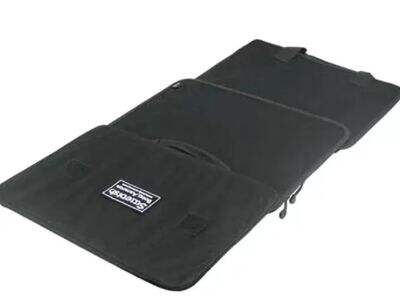Ballistic Riot Shields are crucial for law enforcement and are used by police and tactical officers in dangerous situations. Available in Level III or models, these shields offer end users the type of protection they need for situations where ballistic protection is a must – just doing their job. When choosing to invest in a ballistic shield for your own applications in the field, there are a few key points to take into consideration to help you find the right tool for the job.
Appreciating The Value Of Ballistic Shields In the Police And Tactical Arena
Ballistic shields are a crucial piece of equipment for police and SWAT officers as they effectively protect the wearer against various projectiles including bullets and different types of harmful projectiles. The shields are engineered to be lightweight, affording ease of maneuverability for the officers which is critically important during high-tension situations. Police officers can have an extra barrier of safety when they need to respond to threats and keep the public safe by having a tactical ballistic shield.
Things to Consider When Selecting a Shield for LE Use
When deciding on a ballistic shield for law enforcement, considerations include: Key considerations when selecting a ballistic shield for law enforcement Use of Clear View on ballistic shield You may want a clear window in the shield to maintain visibility of the protected person. The first thing to think about is how well the shield will protect you. Shields are rated according to the caliber of gunfire they can take, so police must choose a shield that protects against threats they are likely to encounter.
The weight and size of the ballistic shield are also factors to be taken into account. A heavy or cumbersome shield may not be easily transported and wielded by officers, and therefore may not be effective in practice. The shield must be able to be worn and manipulated with ease for you to get the most of it.
Assessment of the Protection Provided by Various Ballistic Shields
A good starting point when determining the desired protection level of a Ballistic Shield is the ballistic rating. It’s a more limited number, being the measure of gunfire the shield is required to stop – the higher the number the greater the protection. It's important to select a ballistic shield with a rating suitable to the types of threats officers are likely to encounter while on duty.
Material Whereas the ballistic grade is a concern, the other consideration of the shield of construction. Ballistic shields often utilise high quality materials like Kevlar or Dyneema to offer better protection against gunshots. Selecting a shield made out of the finest materials, LEOs have a product that they can trust and know that the LEOs are well protected in the streets.
Critical Design Components of a Quality Bullet-Proof Shield
A high-quality Ballistic Shield, in addition to offering ballistic summary protection, will also offer additional features enabling it to be used to its fullest potential. One of the features we’d like to see is a viewport, which enables officers to observe and engage threats while standing safely behind the shield. A viewport needs to be sufficiently large so that vision is not obscured while not diminishing the protective capability of a shield.
The handle and grip of the shield are another key aspect to look at. A comfortable, ergonomic handle design is imperative so officers can grip and control the shield under high-stress situations. Some shields may further have adjustable straps or harnesses to aid in making them more comfortable, and less prone to for shifting, during use.
Training and maintaining for effectiveness with ballistic shields at the point of service
"is there a manual with this shield?facts about ballistic shields:Once a Ballistic Shield is chosen, it is crucial that police personnel receives the necessary training and be schooled in the use of it. Training is to incorporate techniques to handle and wield the shield, and to engage with threats in an effective manner while affording protection with the shield. Training officers in the proper deployment of ballistic shields will allow law enforcement agencies to get the most out of this valuable piece of equipment.
Table of Contents
- Appreciating The Value Of Ballistic Shields In the Police And Tactical Arena
- Things to Consider When Selecting a Shield for LE Use
- Assessment of the Protection Provided by Various Ballistic Shields
- Critical Design Components of a Quality Bullet-Proof Shield
- Training and maintaining for effectiveness with ballistic shields at the point of service

